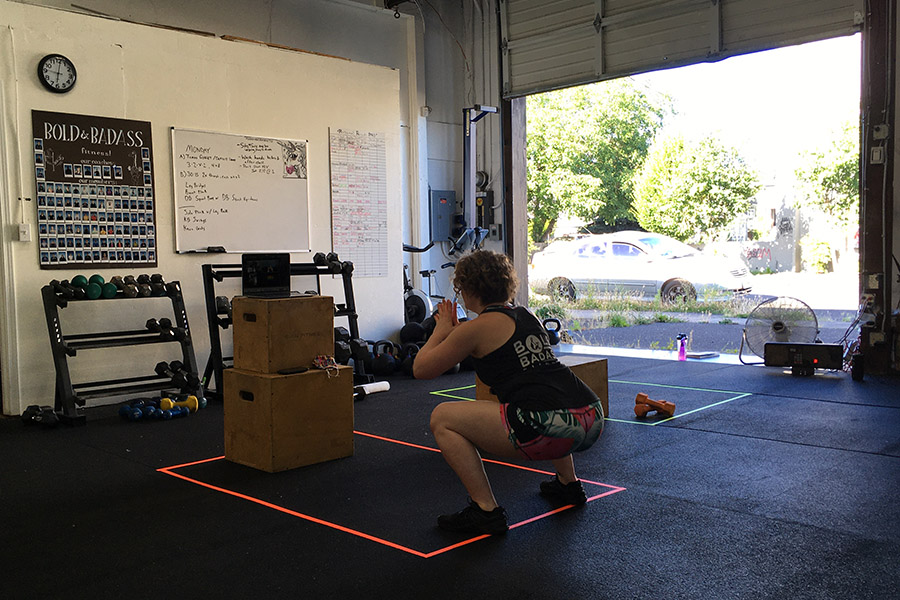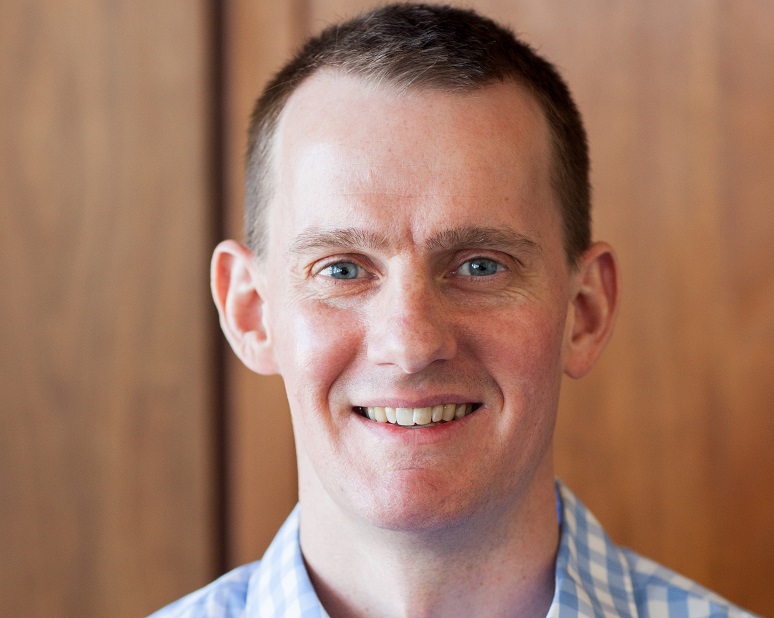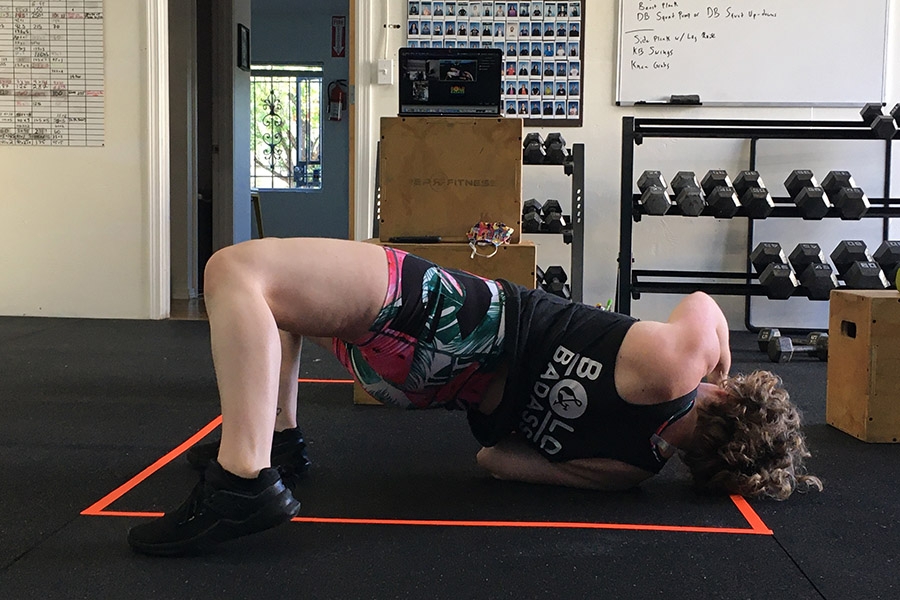Fitness centers turn into media producers and influencers to adapt to their new reality.
Emily Corso, owner of Bold & Badass Fitness in Portland, was in the middle of her martial arts career when she founded her business five years ago. Being a professional athlete was not enough to pay the bills, so she opened a gym with the mission of being body-positive, LGBTQ friendly, feminist and “nerdy to the core.”
Bold & Badass Fitness was already connecting with potential customers over social media before the pandemic. Her customers congregate often in online communities, viewing them as safe spaces to guard against judgment.
Being able to find members in online communities gave Bold & Badass Fitness a head-start at the onset of COVID-19.
On March 16 Corso closed down her gym due to the outbreak, but just two days later the gym was hosting classes on Zoom. Corso reached out to community members and offered “hand-holding” to those who were unfamiliar with using the online platform.
 Emily Corso leads a Zoom class
Emily Corso leads a Zoom class
Gyms and fitness centers had to pivot almost overnight after the governor required these businesses to close in March. Their model was transformed into a virtual one instantly, with instructors and owners suddenly finding themselves becoming media producers in a virtual environment.
The change could prove everlasting. But, as instructors and gym owners have found, simply putting classes up online is not enough. To run virtual businesses, gyms have to behave more like influencers, cultivating strong online communities to lure patrons in the virtual door.
Corso’s business is now entirely digital. The classes include workouts meant to address working from home. A class designed to improve mobility has actually seen an increase in popularity since she offered it online.
One of the routines, dubbed the ‘Toucan’ class, uses two food cans as weights for strength training. Another class involves filling up a backpack with “all the heavy stuff in your house.”
Financially the gym has taken a hit, but due to the online community engagement and online classes, the business will continue to operate. It will operate on a dual model from now on, offering online and in-person workouts in equal measure.
Virtual classes appear to be what many are looking for. Corso sent members an online survey of what they wanted out of the gym, which revealed a third would prefer doing their workouts from home even without the pandemic.
Rob Bennett, owner of the Downtown Athletic Club in Eugene, was hit by COVID-19 on all sides. Not only is the club a fitness center, it also has a restaurant and event space, neither of which could operate under quarantine guidelines.
The onset of COVID-19 meant the club had to quickly adapt its business model. Bennett reached out to the the International Health Racquet & Sportsclub Association and Fitlife, fitness center business organizations.

Rob Bennett, owner of Eugene’s Downtown Athletic Club
Bennett saw the athletic industry coming together through webinars to support and inform one another, and says these online meetings helped him adapt to a rapidly changing market.
The trend toward virtual fitness was already underway in the industry, says Bennett. While his business was not “lagging behind” in terms of digital offerings, it was not a large part of its offerings. The virus jumpstarted the trend, especially for small businesses like his.
The club made spinning classes, tai chi, cardiovascular workouts and yoga videos available on its website. It also released instructional cooking videos to help members maintain healthy eating habits.
There is nothing stopping a non-member from accessing the fitness instruction on the website, but those with access to the company’s members-only Facebook group have even more access to videos.
A large draw of the club is being part of a community and cultivating a personal relationship with instructors. Bennett says this can be accomplished over live online classes and that instructors also connect with members over social media.
While the club has adapted to the changing technological landscape and COVID-19 has increased the club’s online community, in-person attendance is still down 60% compared to last year.
The club may never regain the number of people who used the gym in-person before the pandemic. But its online platform will probably be here to stay.
“This is just one of those moments where everything speeds up,” says Bennett. “But we are fortunate that our members have supported us. This isn’t just a business. There’s a real sense of belonging.”
To subscribe to Oregon Business, click here.








